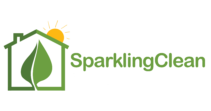Allergen cleaning and management play a crucial role in providing relief to individuals suffering from allergies, asthma, and autoimmune diseases. Consistent and thorough cleaning is key to minimizing allergen build-up and ensuring the effectiveness of your cleaning plan. In this article, we will explore the best strategies for allergen cleaning, empowering you to create a clean and allergen-free environment.
What are the Best Strategies for Allergen Cleaning?

1. The Power of a High-Quality Vacuum Cleaner
Investing in a high-quality vacuum cleaner is paramount for effective allergen cleaning. Choose a vacuum cleaner equipped with a fine particle HEPA filter, which can capture an impressive 99.97% of particles as small as 0.3 microns. This level of filtration sets the standard for removing allergens from your living spaces. Additionally, consider a fabric allergen sanitizer vacuum that utilizes ultraviolet light to eliminate dust mites and bacteria. With its dual filtration system, this type of vacuum can effectively eradicate up to 99.9% of allergenic substances from fabric surfaces.
2. Protect Yourself from Allergens
To safeguard yourself during the allergen cleaning process, it is important to take certain precautions. Avoid latex gloves as they may exacerbate allergies; instead, opt for cotton-lined rubber gloves that offer protection without triggering allergic reactions. Wearing a mask can further reduce your exposure to airborne allergens, ensuring your safety while cleaning.

3. Harness the Power of Microfiber Cloths and Mops
Microfiber cloths and mops are invaluable tools for eliminating dirt and dust from surfaces and floors. The synthetic fibers in these cleaning materials are highly effective, lifting dirt and dust up to three times more efficiently than regular rags. Additionally, microfiber cloths and mops are easily washable, allowing for repeated use and continued effectiveness in capturing allergens.
4. Embrace Green Cleaning Products
Traditional cleaning products often contain Volatile Organic Compounds (VOCs), which can be harmful to our health. These chemicals can irritate the skin, lungs, and eyes, triggering allergic reactions and potentially leading to more serious health consequences, such as asthma attacks and autoimmune diseases. Opting for green cleaning products, which are free from harmful chemicals, is a vital step in ensuring an allergy-free environment.
Going strictly GREEN while cleaning, is an extremely important step to guarantee you will be allergy free!
5. Tackle Mold and Maintain Air Quality
Mold poses a significant health risk and must be promptly addressed. When you spot mold spores, use Sparkling Clean’s DIY Mold recipe to remove them effectively. By tackling mold, you can maintain a healthy indoor environment and safeguard against allergies and respiratory issues.
6. Establish a Door-Entry Methodology
Most contaminants enter our homes through our hands, shoes, coats, and shopping bags. To minimize the introduction of bacteria and allergens, establish a door-entry methodology. Consider implementing a front door hanger and shoe rack system, allowing you to leave your belongings near the entrance immediately upon arrival. Additionally, make it a habit to wash your hands upon entering your home. These practices significantly reduce bacterial growth within your living space.

7. Choose Carpets Wisely
Carpets can harbor various allergens, such as dust, dead skin cells, hair, and food crumbs. To minimize allergen accumulation, avoid full-flooring carpets and opt for smaller, washable carpets that can be easily cleaned in a washing machine. For precious relics like Persian carpets, regular and thorough vacuuming is essential. Consider having them professionally cleaned on a weekly basis and periodically exposing them to sunlight to further eliminate allergens.
Frequently Asked Questions (FAQs)
Q1: How often should I perform allergen cleaning?
A1: For optimal results, it is recommended to perform allergen cleaning on a weekly basis. Regular cleaning helps prevent allergen build-up and ensures the effectiveness of your cleaning efforts.
Q2: What type of vacuum cleaner is best for allergen cleaning?
A2: When choosing a vacuum cleaner for allergen cleaning, opt for one with a fine particle HEPA filter. HEPA filters can capture 99.97% of particles as small as 0.3 microns, making them highly effective in removing allergens from your living spaces.
Q3: Can latex gloves increase allergies?
A3: Yes, latex gloves can potentially trigger allergies in some individuals. It is advisable to use cotton-lined rubber gloves instead, as they offer protection without the risk of allergic reactions.
Q4: Are microfiber cloths and mops more effective than regular rags?
A4: Yes, microfiber cloths and mops are more effective than regular rags when it comes to removing dirt and dust. The synthetic fibers in microfiber materials lift dirt and dust up to three times more efficiently, providing a thorough cleaning.
Q5: Why should I choose green cleaning products?
A5: Green cleaning products are free from harmful chemicals known as Volatile Organic Compounds (VOCs). Traditional cleaning products containing VOCs can cause skin, lung, and eye irritation, leading to allergic reactions and potentially more severe health issues. Opting for green cleaning products ensures a safer and healthier environment.
Q6: How can I effectively remove mold from my home?
A6: To remove mold effectively, you can use Sparkling Clean’s DIY Mold recipe. Promptly address mold by applying the recommended solution and following the instructions provided. This helps maintain healthy air quality in your home and reduces the risk of allergies and respiratory problems.
Q7: What is a door-entry methodology, and how does it help with allergen control?
A7: A door-entry methodology involves implementing systems such as front door hangers and shoe racks near the entrance of your home. This allows you to immediately leave your belongings by the door and wash your hands upon entering. By minimizing the introduction of contaminants from the outside, you can significantly reduce bacterial growth and allergen accumulation within your living space.
Q8: How should I care for carpets to minimize allergens?
A8: To minimize allergens in carpets, it is recommended to avoid full-flooring carpets and choose smaller carpets that can be washed in a washing machine. Regular vacuuming is essential, especially for relics like Persian carpets. Consider professional cleaning on a weekly basis and occasionally expose them to sunlight to eliminate allergens effectively.
Q9: Can allergen cleaning help with asthma and autoimmune diseases?
A9: Yes, allergen cleaning plays a vital role in managing allergies, asthma, and autoimmune diseases. By regularly removing allergens from your environment, you can minimize triggers and create a healthier living space that promotes respiratory well-being.
Q10: Are these strategies suitable for all seasons?
A10: Yes, these strategies are applicable throughout the year. Allergens can be present regardless of the season, so maintaining a consistent cleaning routine is essential for effective allergen management and allergy relief.

Brazilian mother of two and CEO of Sparkling Clean Pro & Green Living Supplies since 2005. Working as an ecological advocate within the cleaning industry & aiding immigrant families and women at risk.
